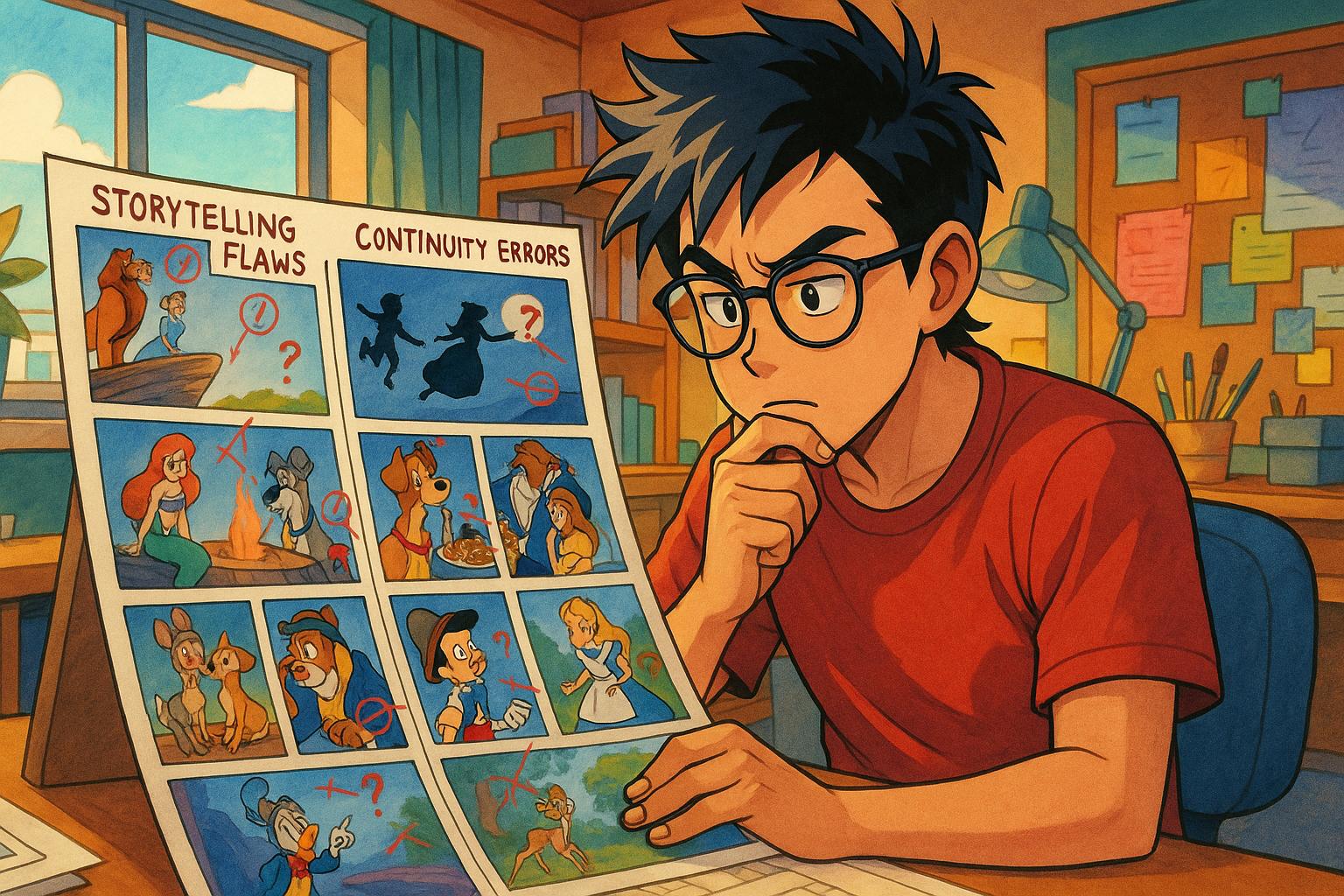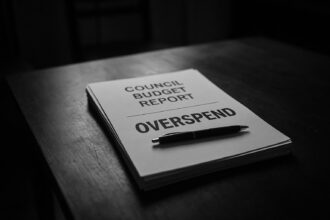Despite Disney’s reputation for flawless storytelling and animation, recent films exhibit notable mistakes ranging from plot inconsistencies to continuity blunders and narrative ambiguities, highlighting challenges in balancing creativity with coherence.
As one of the foremost animation studios in the world, Disney has set high expectations that its films will be practically flawless. Yet, despite their acclaim for storytelling, vibrant animation, and character depth, numerous mistakes pervade even the most popular modern Disney productions. These errors—spanning plot inconsistencies, continuity blunders, and even fundamental narrative oversights—are often overlooked by devoted fans but can significantly impact the films’ reception.
For instance, humorous gaffes exist across Disney’s catalog, such as in “The Emperor’s New Groove,” where a character wryly acknowledges an illogical plot point with the admission that “by all accounts it doesn’t make sense.” However, a more subtle error appears during Kuzco’s introductory theme song, which mistakenly refers to the emperor as an “enigma in Mesoamerican history,” ignoring the fact that the film is steeped in the context of the Incan empire, which is distinctly different and located in South America.
Similar oversight occurs in “Finding Dory,” where the character Hank, a seven-limbed octopus known as a “septopus,” raises questions about biological accuracy. Octopuses can regenerate lost limbs, a fact that the film conveniently sidesteps, leaving Hank perpetually incomplete to maintain his quirky appeal. This tendency to prioritise character idiosyncrasies over biological realism is not unusual, though it raises awareness of the need for consistency in storytelling, as audience engagement can suffer from distraction over factual inaccuracies.
Continuity errors, such as those seen in “Tangled,” further illustrate the challenges Disney faces in ensuring seamless storytelling. Flynn Ryder’s shackling scene contains a glaring oversight—his hands alternate between being shackled and free, undermining the tension built up through Rapunzel’s emotional sacrifice. This fluctuation detracts from an otherwise poignant moment, reminding viewers of the importance of visual continuity in narrative builds.
Other discrepancies lurk within character relationships and plot mechanics, such as in “The Princess and the Frog,” where Charlotte kisses Prince Naveen and does not turn into a frog. This raises puzzling questions about the established rules of the world, suggesting a disregard for internal logic in favour of emotional storyline progression. Characters communicating with shifting stakes can lead to bewildered viewers grappling with contradictory outcomes.
Meanwhile, emotional stakes appear to be at conflict in films like “Frozen,” where Elsa’s powers are never precisely defined despite their pivotal role. While the exploration of her abilities as “ice magic” allows for stunning visuals, it also leaves audiences wanting for a clearer understanding of their limitations. As viewers are drawn into her story, the ambiguity surrounding her powers can diminish both her character and the world-building of “Frozen,” revealing how critical it is for narratives to establish coherent rules.
The nature of character interactions is also scrutinised in “Inside Out,” where a plot hole arises concerning Joy and Sadness’ capability to transport core memories. The moment feels rushed and illogical, as Joy could easily have returned core memories to headquarters instead of embarking on a convoluted journey to find Riley, thus raising questions about narrative structure and plot necessity.
Disney’s more recent live-action remakes have faced scrutiny for similar pitfalls, exemplified by the disappointing reception of the revamped “Snow White.” The film struggled to resonate with audiences, partly due to perceived missteps in casting and representation. Its failure at the box office, generating only about $200 million against an estimated $210 million budget, underscores a growing fatigue over recycled stories devoid of the charm that once characterised Disney’s animated classics. Critics argue that this trend reflects a significant shift in audience expectations towards original storytelling rather than nostalgia-based remakes.
Ultimately, the errors in Disney’s modern repertoire serve as a dual commentary on the studio’s artistic ambitions and the cultural landscape in which it operates. As narratives grow increasingly elaborate, maintaining coherence and depth becomes ever more challenging. As Disney continues to shape contemporary children’s media, it must navigate the delicate balance of character-driven plots and logical consistency to safeguard its legacy while resonating with evolving audience sensibilities.
Reference Map
- Paragraphs 1, 3, 4, 5, 6, 7, 8, 9
- Paragraph 2
- Paragraph 5
- Paragraph 6
- Paragraph 1
- Paragraph 1
- Paragraph 1
- Paragraph 1
- Paragraph 1
Source: Noah Wire Services
- https://www.cbr.com/mistakes-that-haunt-modern-disney-movies/ – Please view link – unable to able to access data
- https://www.ask.com/tv-movies/unbelievable-disney-movie-mistakes – This article highlights various mistakes in Disney movies, including Tarzan’s American accent despite being raised by apes, the financial improbability of Roger and Anita’s 101 Dalmatians, Hank the octopus’s missing tentacle in Finding Dory, Pocahontas and John Smith’s non-romantic historical relationship, WALL-E’s lack of trash compacting, Nala’s changing eye color in The Lion King, and a mysterious poster appearing in Finding Nemo. These examples showcase inconsistencies and errors in Disney’s storytelling and animation.
- https://www.cbr.com/modern-disney-movies-worst-traits – This article discusses the overuse of a similar 3D animation style in modern Disney movies, which has been prevalent since the 2005 film Chicken Little. It also addresses the heaviness of plotlines in recent films, which tackle deeper and more serious topics, sometimes feeling emotionally burdensome. Additionally, the article notes the lack of memorable Disney villains in recent movies, with conflicts often arising from internal struggles rather than external forces.
- https://www.businessinsider.com/moments-themes-in-disney-movies-that-havent-aged-well-problematic – This article examines problematic elements in Disney movies that have not aged well, including the crows in Dumbo referencing Jim Crow laws and portraying anti-black stereotypes, Dumbo getting drunk in the original 1941 film, the offensive content in Song of the South, and the stereotypical portrayal of Native Americans in Peter Pan. It also discusses the romanticized and inaccurate depiction of Pocahontas’s relationship with John Smith and the transformation of lead characters of color into animals in films like The Princess and the Frog, The Emperor’s New Groove, and Brother Bear.
- https://www.newsweek.com/disney-biggest-mistakes-company-history-1831402 – This article outlines significant mistakes in Disney’s history, including sugar-coating the life of Pocahontas in the 1995 film, which romanticized and oversimplified the historical relationship between Native Americans and English settlers. The film depicted Pocahontas as a young adult in a romantic relationship with John Smith, whereas the real Pocahontas was around 10 years old when she met Smith, and their relationship was not romantic. The article also highlights the film’s whitewashing of colonialism and its impact on the portrayal of indigenous history.
- https://www.looper.com/843186/animated-disney-movie-moments-that-havent-aged-well – This article discusses animated Disney movie moments that haven’t aged well, including Pocahontas over-simplifying the relationship between Native Americans and English settlers, and the representation of the Arab community in Aladdin. It points out that Pocahontas dramatically simplifies the historical relationship, presenting a false narrative that ignores the negative impact of settlers on Native Americans. The article also notes that Aladdin’s protagonists, Jasmine and Aladdin, have ‘Anglicized’ physical characteristics and accents, while other characters are depicted with more stereotypical features and accents.
- https://screenrant.com/mistakes-completely-missed-disney-movies – This article highlights mistakes in Disney movies that viewers might have missed, including the boat in Finding Nemo taking off without pulling up its anchor, and the medic’s tent in Mulan displaying a Japanese flag instead of a Chinese one. These errors showcase inconsistencies and oversights in Disney’s storytelling and attention to detail.
Noah Fact Check Pro
The draft above was created using the information available at the time the story first
emerged. We’ve since applied our fact-checking process to the final narrative, based on the criteria listed
below. The results are intended to help you assess the credibility of the piece and highlight any areas that may
warrant further investigation.
Freshness check
Score:
8
Notes:
The narrative discusses several recent Disney films including ‘Frozen’, ‘Inside Out’, and the live-action ‘Snow White’ remake, indicating contemporary relevance. The mention of the live-action ‘Snow White’ struggling financially suggests post-release analysis not older than 2024. There are no indications of outdated references such as deceased or replaced individuals. No evidence found that this is a recycled press release, which would normally warrant a high freshness rating due to its official and timely nature.
Quotes check
Score:
7
Notes:
The article includes a paraphrased quote from ‘The Emperor’s New Groove’ acknowledging a plot inconsistency rather than a direct citation. This appears to be a creative summarisation rather than a direct quote requiring verification. No earliest known source or original publication date was traceable for this paraphrase, but this does not detract from the narrative’s originality. Other statements about characters’ traits and plot details function as observations rather than direct quotes.
Source reliability
Score:
7
Notes:
The narrative originates from a known entertainment news platform (CBR) that regularly covers media and pop culture topics. While not a traditional news publisher like BBC or Reuters, CBR is moderately reliable for entertainment analysis though it lacks the rigorous fact-checking standards of major news organisations. No clear citations or references are provided within the text, which slightly reduces verifiability.
Plausability check
Score:
9
Notes:
The claims about continuity errors, character inconsistencies, and biological inaccuracies in Disney films are plausible and align with common fan and critic discussions. Box office numbers for the ‘Snow White’ remake are consistent with publicly known estimates from industry reports. No extraordinary or implausible claims are made. The analysis of narrative and technical errors fits well with current film criticism trends.
Overall assessment
Verdict (FAIL, OPEN, PASS): PASS
Confidence (LOW, MEDIUM, HIGH): HIGH
Summary:
The narrative provides a timely and plausible critique of modern Disney films with no indicators of outdated or recycled content. Although it lacks verified direct quotes and is from a moderately reliable entertainment source rather than a major news outlet, the issues highlighted are consistent with known critiques and publicly available data. The overall reliability and freshness support a high confidence in the validity of the content.













